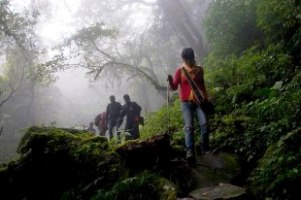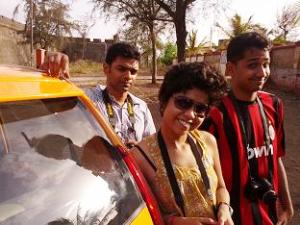The recent clashes in Assam once again reveal the gory and tragic history of India's Northeast. Political and social commentators have tried to explain away the Northeast problems in a very facile manner without looking into the complex nature of the problems, be they ethnic, political or militant issues. They have taken a singular view of the question of identity or administration in the region by considering it as a single unit. The single unit misnomer perhaps makes solutions elusive. There is no doubt a kind of unity among the people of the region but this should not be mistaken as a unified problem which besets the region. The concept of singularity is for administrative and bureaucratic reasons.
For example, Sikkim is included administratively in the region as it falls under the purview of the North East Council.
What is overlooked is the complexity and strands of problems which each state in its unique way faces, whether we call them social or political. The recent unrest in the Kokrajhar District of Assam between two communities is, as a citizen journalist pointed out is due to the contentious issue of land. This is a very pertinent point, as for the economically weak sections of the society it is land which is the source of all value and cannot even be monitized. That is why the Nandigram and Singur conflagrations took place. Land could not even be substituted with money. Similarly, in Northeast because of immigration land has become the bone of contention as the migrant from a neighbouring country takes possession of the land and makes it cultivable. Land therefore is the major source of conflict in states such as Assam and people fear that the same problem may arise in neighbouring states such as Nagaland and Meghalaya. In Meghalaya for example the uranium mining question has become a symbol of unrest because the local people feel threatened if they are dispossessed from their land. After all, where will they go to if space is taken up for mining? These are issues which must be considered in a country like India which is characterized by sharp class divisions and bad governance.
Secondly, the militant issues must be seen separately and not identifiable as one. For example, certain groups want secession from the Indian Union while some advocate a separate state such as that in the Bodo areas of Assam etc. Similarly, in Assam there are further fractious units such as the Karbis and the people in the North Cachar Hills. These issues must be seen separately. Even in Meghalaya there is demand for separatism which is again raising its head, something which the Union Home Minister when he visited Shillong recently seemed oblivious about. In Manipur there is a similar separatist tendency which is faction ridden and the Manipur question is also entangled with the Naga problem which right now has an uneasy quiet about it in the form of cease fire which has lasted for over a decade. But mind you, cease fire is not peace and ironically such cease fire is between the government and its own people.
Again, the role of the Army comes in. Using the Army to tackle isurgency alienates the local people from the so called mainstream, a point which has been lucidly mentioned with examples by the journalist, Sudeep Chakravarti in his much talked about book: "Highway 39 Journeys Through A Fractured Land".
Each state has its own individuated problems which must be tackled separately taking into consideration the geo and socio politics of the region and the bogey of singularity if raised will only make the answers elusive. What is, needed is empathy and a cohesive action plan which is not only empathetic but also imaginative.
The present burgeoning violence in the Kokrajhar and adjoining Dhubri districts of Assam, is tragic to say the least, it has become religio - ethnic in the vilest and most tragic ways. Villages have been torched and people have become refugees in their own homes. This is brutalization of society in its worst manifestation. Such grisly episodes have happened in the past in Assam and elsewhere in the Northeast. This present situation is a reminder of what happened in Nellie in 1982 and is symptomatic of larger issues such as migration, possession of land, the 'them' versus 'us' syndrome and xenophobia. Fear build its own ghosts, but the question is how can such fears be assuaged, fears which have a basis in underlying realities such as demography. The social patterns of Assam reveal that the outsider insider conflict has to do with demography and possession of land, and land grabbing. We have only looked at the symptoms but a deeper understanding of the malaise eludes us because of fractious elements and politicization of such episodes. I have always been maintaining that deploying the services of the Army in any situation is an 'alienating' factor.
It is only community fibres that can be the solution to this demonic problem and cultural assimilation in larger contexts of Northeast India. The 'outsiders' who live there must make conscious efforts to reach out and break barriers of a 'ghettoish' mentality. I know all this is easier said than done, but the corridors of power should also remember that the singularity approach to the problems of Northeast will only weaken our thinking about them, the larger issues of militancy and separatism, tribal, local and customary laws, the historical past of kingdoms as in Assam, Meghalaya and Manipur, will have to be considered critically in relation to past and there should be more formal recognition and strengthening of such laws vis-a-vis the mimmediate, local communities. Traditional institutions should be given more leverage so that the fear that indigeneous rights are assailed can be combated in constructivist fashion, in the areas of governance and social and economic development. One aspect of this is road connectivity as a means to the outside world. The more one is cooped up in land locked surroundings, the more pent up frustration exists.
(A.S. Guha works in the Indira Gandhi National Open University, Shillong (Meghalaya) as an Academic Administrator. He has over 30 years of teaching and administrative experience. He has six collections of poetry and his forms have been published world wide. Some of his poems are due to appear soon in an Anthology of Indian Poetry in English to be published by Harper Collins.)
The views expressed by the writer are his own.







































